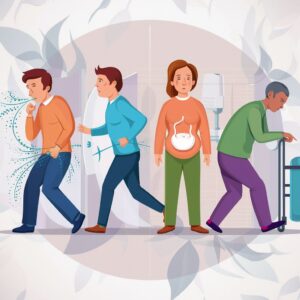
Managing Incontinence Effective Therapy Options
Treatment Options for Incontinence Management
Incontinence is a widespread medical disease that impacts many individuals worldwide. It describes the involuntary passage of bodily fluids, such as urine or excrement, which can substantially negatively affect a person’s overall well-being. The four primary categories of incontinence are stress, urge, overflow, and functional incontinence.
Every category has unique causes and symptoms. Stress incontinence is the involuntary leakage of pee that happens when the bladder is subjected to pressure. This can occur during coughing, sneezing, laughing, or exercising.
Urge incontinence is defined as a sudden and overwhelming urge to urinate, followed by the involuntary leakage of urine. When the bladder does not empty, overflow incontinence results in frequent or continuous pee dribbling. Functional incontinence commonly occurs when a person cannot reach the toilet promptly due to physical or cognitive limitations.
The aetiology of incontinence varies depending on the type. Stress incontinence often occurs due to weakening pelvic floor muscles, whereas urge incontinence may be associated with an overactive bladder or nerve impairment. Additional possible factors are urinary tract infections, constipation, specific drugs, and neurological diseases.
The symptoms of incontinence vary from slight leaking to total loss of bladder or bowel control. Individuals experiencing symptoms of incontinence should prioritise seeking medical consultation to identify the root cause and explore suitable treatment options.
Key Takeaways
- Incontinence can be caused by various factors, including weakened pelvic floor muscles, nerve damage, and certain medical conditions.
- Lifestyle changes such as maintaining a healthy weight, avoiding bladder irritants, and practising bladder training can help manage incontinence symptoms.
- Medications like anticholinergics and mirabegron can be prescribed to help control overactive bladder and reduce incontinence episodes.
- Pelvic floor exercises, also known as Kegels, and physical therapy can strengthen the pelvic floor muscles and improve bladder control.
- Surgical options, such as sling procedures and bladder neck suspension, may be considered for severe cases of incontinence that do not respond to other treatments.
 Lifestyle Changes and Behavioral Therapy for Incontinence
Lifestyle Changes and Behavioral Therapy for Incontinence
Dietary Adjustments
Making simple adjustments to daily habits can significantly reduce the frequency and severity of incontinence episodes. For example, reducing fluid intake, especially before bedtime, can help minimise the need to urinate during the night. Avoiding caffeine and alcohol, which can irritate the bladder and increase urine production, may also be beneficial.
Physical Activity and Weight Management
In addition to dietary changes, maintaining a healthy weight and engaging in regular physical activity can help strengthen the pelvic floor muscles and improve bladder control. Quitting smoking is also important, as smoking can contribute to coughing and bladder irritation, which can exacerbate incontinence symptoms.
Behavioural Therapy Techniques
Behavioural therapy techniques, such as bladder training and scheduled voiding, can help individuals regain control over their bladder function. These techniques involve gradually increasing the time between bathroom visits and learning to recognise and respond to the body’s signals for urination. Furthermore, practising good toilet habits, such as taking enough time to empty the bladder and using relaxation techniques to reduce urgency, can also be helpful.
Additional Therapies
In some cases, biofeedback therapy or electrical stimulation may be recommended to help individuals gain better control over their pelvic floor muscles. By implementing these lifestyle changes and behavioural therapy techniques, many individuals with incontinence can experience significant improvement in their symptoms and regain confidence in their daily activities.
Medication Options for Managing Incontinence
Aside from making adjustments to one’s lifestyle and undergoing behavioural therapy, other pharmacological choices can be used to manage incontinence effectively. The choice of medication provided will be contingent upon the incontinence’s precise classification and underlying aetiology. Anticholinergic drugs are frequently employed to manage urge incontinence by inducing relaxation in the muscles of the bladder and diminishing the frequency of contractions.
These drugs can alleviate the abrupt and severe need to urinate, indicative of urge incontinence. Mirabegron is a medicine that can be administered to treat incontinence. It relaxes the bladder muscle and enhances its ability to retain urine. This medicine is commonly used for the treatment of symptoms associated with an overactive bladder, for example, the sudden and consistent urge to pee.
Topical oestrogen therapy may be prescribed for persons experiencing stress incontinence to enhance the resilience and flexibility of the tissues in the urethra and vaginal region. Tricyclic antidepressants or other drugs that impact nerve signals may be used in certain instances to assist in managing symptoms of incontinence. Individuals who are exploring drug choices for incontinence should consult a healthcare expert to establish the most suitable treatment based on their specific symptoms and medical history.
Although drugs can effectively manage incontinence for certain persons, it is essential to scrutinise their potential adverse effects.
 Pelvic Floor Exercises and Physical Therapy for Incontinence
Pelvic Floor Exercises and Physical Therapy for Incontinence
Pelvic floor exercises, usually Kegel exercises, are essential to physical therapy for managing incontinence. These exercises entail contracting and relaxing the muscles in the pelvic floor to enhance strength and control. By fortifying these muscles, individuals can improve their ability to support the bladder and bowel, decreasing the likelihood of leakage and gaining control and independence.
Pelvic floor exercises are especially advantageous for patients experiencing stress incontinence, as they enhance the capacity to retain urine during activities that exert pressure on the bladder. Physical therapy for the pelvic floor may incorporate several modalities, including biofeedback. Biofeedback employs sensors to offer visual or aural cues regarding muscle activity, aiding individuals in acquiring the skill to contract and release their pelvic floor muscles effectively by applying gentle electrical pulses to the area. It is possible to enhance pelvic floor muscle strength with electrical stimulation.
Specialised physical therapists in pelvic floor rehabilitation collaborate with patients to create customised training regimens tailored to their unique requirements and objectives. These programs may also incorporate stretches and strengthening exercises targeting additional muscle groups that support pelvic floor function. Engaging in physical therapy for incontinence can enhance patients’ muscular strength and coordination, resulting in enhanced bladder control and fewer incontinence symptoms.
Surgical Options for Incontinence Treatment
Surgical interventions may be explored for those with severe or persistent incontinence that does not improve with conservative therapy. Various surgical interventions are available to treat different forms of incontinence, with each technique targeting the root cause of the disease. A frequently used surgical treatment for stress incontinence is the sling operation. This procedure entails placing a supporting sling over the urethra to offer extra support and prevent leakage when engaging in activities that strain the bladder.
A bladder neck suspension is an additional surgical technique used to treat stress incontinence. It involves attaching the neck of the bladder to adjacent structures to enhance the regulation of urine flow. For those with symptoms of an overactive bladder or urge incontinence, sacral neuromodulation may be recommended. This treatment involves placing a miniature device near the sacral nerves to regulate nerve signals associated with bladder function, diminishing the urgency and frequency of urinating.
Occasionally, surgical interventions for incontinence may involve procedures to rectify anatomical anomalies or treat underlying disorders that contribute to symptoms. Before making a decision, individuals contemplating surgical intervention for incontinence should thoroughly discuss the prospective hazards and advantages with a healthcare professional and thoughtfully evaluate their alternatives.
Incontinence Products and Devices for Management
Absorbent Products
Disposable absorbent products, such as pads, liners, and adult diapers, are commonly used to manage urinary or faecal incontinence. These products come in various sizes and absorbency levels to meet individual needs. Reusable absorbent underwear and protective garments are also available for those looking for more sustainable options.
Assistive Devices
For individuals with mobility limitations or difficulty reaching the toilet in time, portable urinals or bedpans may help manage urinary incontinence. Male external catheters and female urinary collection devices are also available for individuals who require assistance with urinary drainage.
Skin and Odor Care
In addition to absorbent products, skin care products such as barrier creams and cleansing wipes can help prevent irritation and discomfort associated with frequent exposure to urine or faeces. Odour control products, such as deodorising sprays or pouches, are also available to help manage unpleasant odours associated with incontinence.
 Combining Therapy Options for Effective Incontinence Management
Combining Therapy Options for Effective Incontinence Management
A combination of therapy approaches is often required for effective incontinence management. For instance, a person with stress incontinence can find relief by engaging in pelvic floor exercises to fortify the muscles that support the bladder. Additionally, lifestyle adjustments such as managing weight and making food alterations can help alleviate strain on the bladder. Similarly, a person with urge incontinence may find relief through pharmacotherapy to decrease the urgency and frequency of urine. Behavioural therapy strategies like bladder training can help regain control over bladder function.
Individuals with incontinence caused by several factors or complex conditions may require a comprehensive approach that incorporates various therapy approaches to control their symptoms effectively. This comprehensive care is provided by a healthcare team comprising physicians, physical therapists, occupational therapists, and other specialists. They provide individualised care based on their requirements to make people feel supported and cared for. By integrating several therapeutic approaches, persons can achieve an enhanced quality of life and restore their self-assurance in everyday activities without apprehension or unease related to incontinence.
Individuals suffering from incontinence should see healthcare professionals for assistance with the various treatment choices and to create a customised strategy that caters to their specific needs and objectives.
FAQs
What is incontinence therapy?
Incontinence therapy refers to the various treatments and interventions to manage and improve urinary or faecal incontinence symptoms. These therapies can include lifestyle changes, pelvic floor exercises, medication, medical devices, and, in some cases, surgery.
What are the common causes of incontinence?
Incontinence can be caused by a variety of factors, including weakened pelvic floor muscles, nerve damage, urinary tract infections, certain medications, and underlying medical conditions such as diabetes, Parkinson’s disease, or prostate issues in men.
What are the different types of incontinence therapy?
Incontinence therapy can include pelvic floor muscle exercises (Kegel exercises), bladder training, dietary and fluid management, medication, biofeedback, electrical stimulation, and, in some cases, surgical interventions such as sling procedures or artificial urinary sphincter implants.
How effective is incontinence therapy?
The effectiveness of incontinence therapy can vary depending on the individual and the underlying cause. Many people experience significant improvement in their symptoms with the appropriate therapy, while others may require a combination of treatments to achieve the desired results.
Does insurance cover incontinence therapy?
In many cases, incontinence therapy and related treatments are covered by health insurance. However, coverage can vary depending on the specific insurance plan and the recommended therapy type. It’s important to check with your insurance provider to understand what is covered and what out-of-pocket costs may be involved.
Brought To You By:
References
Tips for Dealing with Urinary Incontinence (For Men) | OncoLink. https://www.oncolink.org/support/practical-and-emotional/physical-concerns/tips-for-dealing-with-urinary-incontinence-for-men
Understanding Incontinence and Its Effects – P Homecare. https://www.phomecare.com.au/2023/05/16/understanding-incontinence-and-its-effects/
The Article: Managing Incontinence Effective Therapy Options appeared first on https://mcrtherapies.co.uk
The Article Managing Incontinence Effective Therapy Options appeared first on https://mcrtherapies.com
The Article Managing Incontinence Effective Therapy Options Was Found On https://limitsofstrategy.com
The Article Managing Incontinence Effective Therapy Options First Appeared ON
: https://ad4sc.com

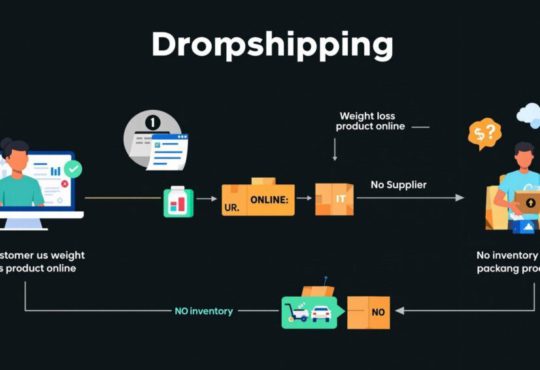

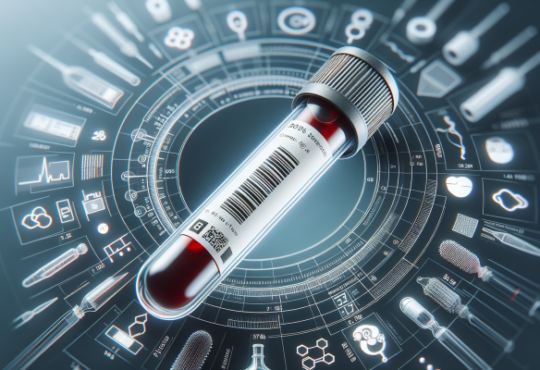
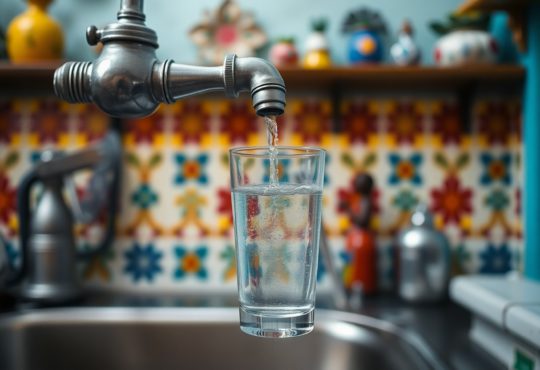


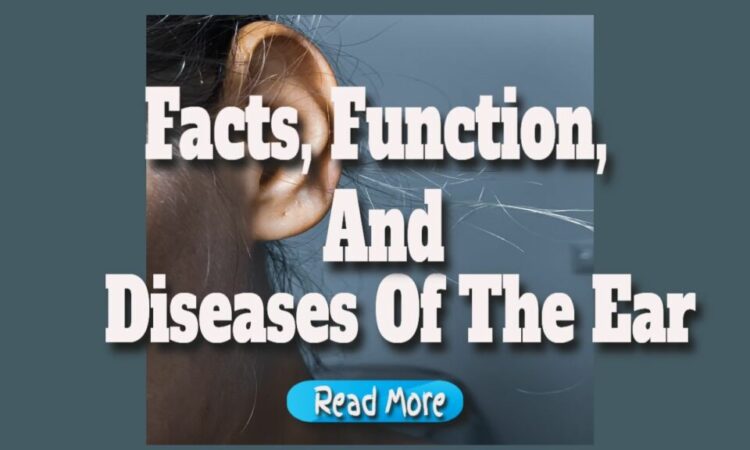



This post offers an invaluable overview of incontinence, a topic that often remains shrouded in stigma and misunderstanding. It strikes me that beyond the clinical definitions and categories, the real challenge lies in how this condition shapes individuals’ daily lives and mental health. For many, the anxiety that accompanies incontinence can lead to social withdrawal and a diminished quality of life.
You’ve touched on a crucial point that often gets overlooked in discussions about incontinence. While the clinical aspects—like definitions and treatments—are essential, the emotional and social ramifications are where the real challenge often lies. Many people might not realize that the fear of experiencing incontinence can create a ripple effect that influences various aspects of a person’s life.
You’re right; the emotional and social ramifications of incontinence can often overshadow the clinical side. It’s fascinating how something so physical can weave itself into the fabric of our social interactions and self-perception. I’ve seen it impact people’s willingness to engage in activities they once enjoyed, like travel or sports, simply due to the anxiety of potential leaks or the need for accessible facilities.
You raise a really important point about the impact of incontinence on daily life and mental health. It’s so true that the physical aspects of the condition often get more focus, while the emotional toll remains largely unaddressed. This anxiety can create a vicious cycle—worrying about potential accidents can lead individuals to avoid situations where they might feel exposed.
You’ve touched on such a critical aspect of incontinence that often gets overlooked. The physical symptoms can manifest in ways that are more visible, but the emotional struggles can be just as debilitating, if not more so. I’ve seen friends navigate this cycle, where the fear of potential accidents can keep them from participating in social events or enjoying daily activities, contributing to isolation and anxiety.
The way incontinence influences daily life and mental health is a deeply important aspect of this condition that often goes unnoticed. It’s heartening to see more people beginning to acknowledge the emotional weight that comes with physical challenges. The stigma surrounding incontinence can feel isolating and burdensome, and many people grapple with feelings of shame and embarrassment. This is a real issue, and it’s crucial for us to open a dialogue about it.
You hit on a point that often gets overlooked in discussions about incontinence. The emotional weight it carries, alongside the physical challenges, can be a heavy burden to bear. It’s not just a practical issue; it’s deeply intertwined with mental health and self-esteem. Many people don’t realize how isolating it can be. In a society that places such a high value on physical perfection and confidence, dealing with something like incontinence can lead to feelings of shame that just add to the stress.
You’ve really touched on something important here. The emotional weight that comes with incontinence often isn’t given the attention it deserves. It’s fascinating (and frustrating) how our society tends to prioritize physical perfection, creating this unspoken pressure around how we present ourselves to the world. Many don’t realize the profound impact that these conditions can have on mental health and self-esteem.
You’ve touched on an essential aspect of incontinence that often goes unaddressed—the profound impact it has on daily life and mental health. It’s true that the clinical definitions can feel detached from the reality people face. Imagine navigating a world where every decision is influenced by the fear of an ‘accident.’ It’s not just a physical condition; it becomes a lens through which individuals view their lives.
You’ve really captured the struggle that comes with incontinence so well. It’s almost like walking a tightrope; every moment is filled with anxiety about what could happen. This fear can really isolate individuals, making social settings feel daunting. I remember reading about how widespread this issue is and how so many people suffer in silence, often because they feel ashamed or embarrassed.
You bring up such an important point about the anxiety that accompanies incontinence. It really does feel like walking a tightrope, doesn’t it? The constant vigilance can be exhausting, and I can see how it leads to that sense of isolation. It makes social situations much more complicated than they need to be. I’ve encountered friends who have had similar experiences, and it’s eye-opening.
You really captured the emotional weight of incontinence. It’s striking how a physical condition can seep into so many aspects of life, influencing everything from social gatherings to personal relationships. When I think about the fear of an “accident,” it brings to mind how similar experiences can resonate across different health challenges—like living with chronic pain or anxiety. Each can shift the way we approach simple activities, and the mental load that comes with managing those fears can be just as overwhelming as the physical symptoms.
You hit the nail on the head. The clinical stuff is important, but when it’s time to look in the mirror (or more accurately, the restroom mirror), that’s when the fun begins, right?
You’re so right about that. The clinical stuff can often feel detached from reality, but those moments of self-reflection really highlight the journey we’re on. It’s in those private moments in front of the mirror where we confront both our physical and mental states. It’s a blend of vulnerability and empowerment, isn’t it?
You’ve captured a really important aspect of self-reflection. Those moments in front of the mirror can indeed reveal so much about how we perceive ourselves—it’s like an intimate dialogue where we face our vulnerabilities head-on. I find that it often prompts a deeper understanding of what we’re experiencing beyond just the clinical side of life.
You’ve hit on something that resonates with many. Those moments in front of the mirror often strip away the distractions, leaving us to confront our true selves. It’s remarkable how this dialogue helps uncover layers of our emotions that we might otherwise overlook.
You bring up such a poignant point about the intimacy of those moments in front of the mirror. It’s interesting how that quiet time can act almost like a therapy session, where we strip away the external noise and really confront our inner dialogues. I often find that it’s in those reflective moments that I recognize patterns in my thoughts or emotions that might otherwise go unexamined.
You hit on something really profound there. Those moments of standing in front of the mirror can be so revealing. It’s like we peel back the layers a bit and see not just how we look, but what’s been going on inside. That mix of vulnerability and empowerment can be tough to navigate, but it often encourages us to embrace our true selves, flaws and all.
You’ve captured a critical aspect of our experience so well. Those moments in front of the mirror can be profound, can’t they? It’s almost like a private ritual where we strip away the layers of daily life and truly face ourselves. I often feel that this self-reflection brings clarity, especially in our fast-paced world where it’s easy to get caught up in the clinical or the superficial.
You’ve touched on something really important with your thoughts about the daily impact of incontinence. It’s easy to get caught up in the clinical side of things—the definitions, the types, and the potential treatments. But at the end of the day, it’s the human experience that matters most. Many people living with incontinence deal with feelings that creep into their daily lives, often affecting their sense of comfort and confidence.
You bring up such an important point about the daily reality of living with incontinence. The clinical definitions can feel so far removed from the real-life experiences that people face. It’s not just about the physical challenges; the psychological aspects can be so profound.
I came across some key insights on overactive bladder syndrome that might shed light on how this condition affects daily life and mental well-being, addressing the very challenges you mentioned.
‘Overactive Bladder Syndrome: Key Facts You Should Know’
https://cable13.com/overactive-bladder-syndrome-key-facts-you-should-know/.
Ah, incontinence – the not-so-glamorous topic that we all quietly sneak around, much like someone tiptoeing past a sleeping dragon. It’s fascinating how the conversation around such a common issue can sometimes feel more taboo than discussing the latest celebrity gossip. I mean, how is it that we can dissect every little detail of someone’s love life, and yet the idea of involuntary bodily functions turns everyone into a deer caught in headlights?
You’ve hit on something really interesting with that comparison. Incontinence is indeed one of those topics where there’s a palpable tension in the room, almost like it carries a stigma that feels heavier than it should. It makes me think about how society often prioritizes certain conversations over others, right? We can dissect every detail of celebrity lives, but the minute we bring up something related to bodily functions, people shift uncomfortably.
You’ve captured the essence of the awkwardness surrounding incontinence perfectly. It’s true that we tiptoe around this topic as if we’re navigating a minefield, while the latest celebrity mishap gets detailed coverage without a second thought. It’s puzzling, right?
It’s insightful to see incontinence addressed with such clarity, especially given its impact on daily life for so many individuals. I find it particularly important to emphasize the stigma that often surrounds these conversations. Many people suffer in silence, believing they are alone in their experience, which can lead to emotional distress and social withdrawal.
Incontinence is indeed a complex issue that often goes unaddressed due to the stigma surrounding it. The classification of stress, urge, overflow, and functional incontinence highlights the diverse challenges individuals face and underscores the importance of personalized management strategies.
It’s interesting how incontinence can be such a taboo topic, yet it affects so many people. I’ve seen how it can impact daily life not just physically but also emotionally. I remember a friend was hesitant to join a fitness class because of her stress incontinence. It’s a reminder of how important it is to create supportive spaces where people feel safe to share their experiences without shame.
Your summary of the various types of incontinence is both clear and informative. As someone who has seen loved ones navigate these challenges, I appreciate how vital it is to raise awareness about the emotional and social impacts of incontinence alongside the physical symptoms.
It’s really interesting to see incontinence being discussed so openly, as it often feels like a topic shrouded in stigma. I can relate to the experience of those with stress incontinence, especially from my own perspective during physical activities or even when laughing too hard with friends. It’s eye-opening to realize how common these issues are and that they can affect anyone, regardless of age or gender.
It’s interesting to consider how incontinence, though often stigmatized, is an issue that many face and yet rarely discuss openly. While you’ve clearly outlined the categories, I think it’s important to highlight the emotional and psychological toll that incontinence can take on individuals. For instance, people with urge incontinence may start avoiding social situations, fearing an urgent need to use the bathroom. This can contribute to feelings of isolation and anxiety, which complicates the condition beyond the physical symptoms.
You bring up such a critical point about the emotional and psychological toll of incontinence. It’s true that while we might hear about the physical aspects often, the mental impact can be equally, if not more, challenging. The fear of needing to dash to a restroom at the worst possible moments can create a heavy cloud of anxiety that’s hard to shake off, leading to the isolation many experience.